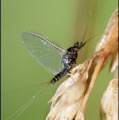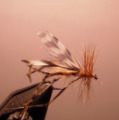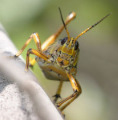The Bugs
seasons and hatches
The fertility of the Driftless Area spring creeks means incredible insect and crustacean life all season long. The opportunity to fish for rising trout is second to none here as there are strong hatches all season. In addition to the abundant mayflies and caddis, scuds and sowbugs cover the streambeds providing fish a constant food source even when there is no hatch to match. Leech patterns and streamers fished under banks and in deeper pools can provide some of the best (and biggest) trout of the season under any water condition. The rolling meadow character of many of these streams means terrestrials give trout a consistent source of food during the warmer months. The Wisconsin season runs from the first Saturday in January to October 15th. Catch and release is the first Saturday in January to the first Saturday in May. The first Saturday in May through October 15th is regular season.
WINTER
It's Wisconsin. It's cold and usually snowy! There will be a handful of warmer days all winter long when the sun is shining enough to heat the bottom of the creeks and get midges and winter stoneflies moving. You want a 25 degree sunny day or 35 degree cloudy day for the best winter fishing.
Water temperatures are typically in the mid 30s and the water will not completely freeze over thanks to the springs and seeps. Be prepared to fish low and slow with small dark bead heads and leech patterns.
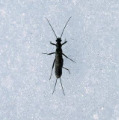
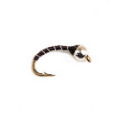
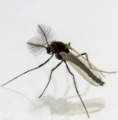

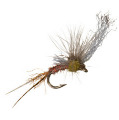
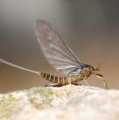
Winter / Spring
March through May
Winter weather fades and water temperatures lose their chill. This is an excellent time to fish for big fish, which feed aggressively this time of year even in non-classified waters which can get a bit warm during the summer. There is still the chance of early wind, snow and rain which can be heavy at times. Keep in mind that these storms are often localized, meaning one stream may be blown out but a stream a couple of valleys over could be crystal clear. When the rains hit, you can also head up to the headwater tributary streams where the water usually runs clear.The biggest hatches this time of year are the blue winged olives (Baetis) and (Brachycentrus) Black Caddis as well as Tan Caddis. These insects can hatch in large concentrated quantities and offer some of the best dry-fly fishing of the year. A caddis larva rolled along the bottom with a scud following can be deadly during the spring. There is a light hatch of Hendricksons and March Browns in the spring as well as the first few Craneflies, Sulphurs and Cahills in late May.
Summer / Fall
June through mid-October
Lighter colored mayflies (Sulphurs, Cahills, PMDs) craneflies, and yellow sallies dominate the early part of June until temperatures warm up. Once summer hits, it's terrestrial time! Summer fishing is best (and most comfortable) from sun-up into the early morning and late afternoons until dusk. This is when the majority of the hatch activity takes place. During the mid-day sun, look for fish in shaded areas and undercut banks.There is a mix of bugs including the tiny olive (formerly Pseudocoleon) with some Cahills, Tan Caddis and Midges as well. Craneflies are also abundant this time of year and can offer some of the best fishing in the warmer months. Later on in the season, some Coulee region streams get a heavy hatch of Tricos; these tiny mayflies can provide some great fishing on summer mornings. Ants, beetles, crickets and hoppers are also very important and readily available sources of food in the summer, and can provide some excellent fishing even when trout do not seem to be interested in anything else.In the later summer, when temperatures have cooled, some of the big brown trout swim up into the headwater streams getting ready to spawn. This is an excellent time to catch a trophy fish! If you see any fish on beds, please leave them alone to produce another generation of trout. Concentrate on the aggressive fish downstream.
